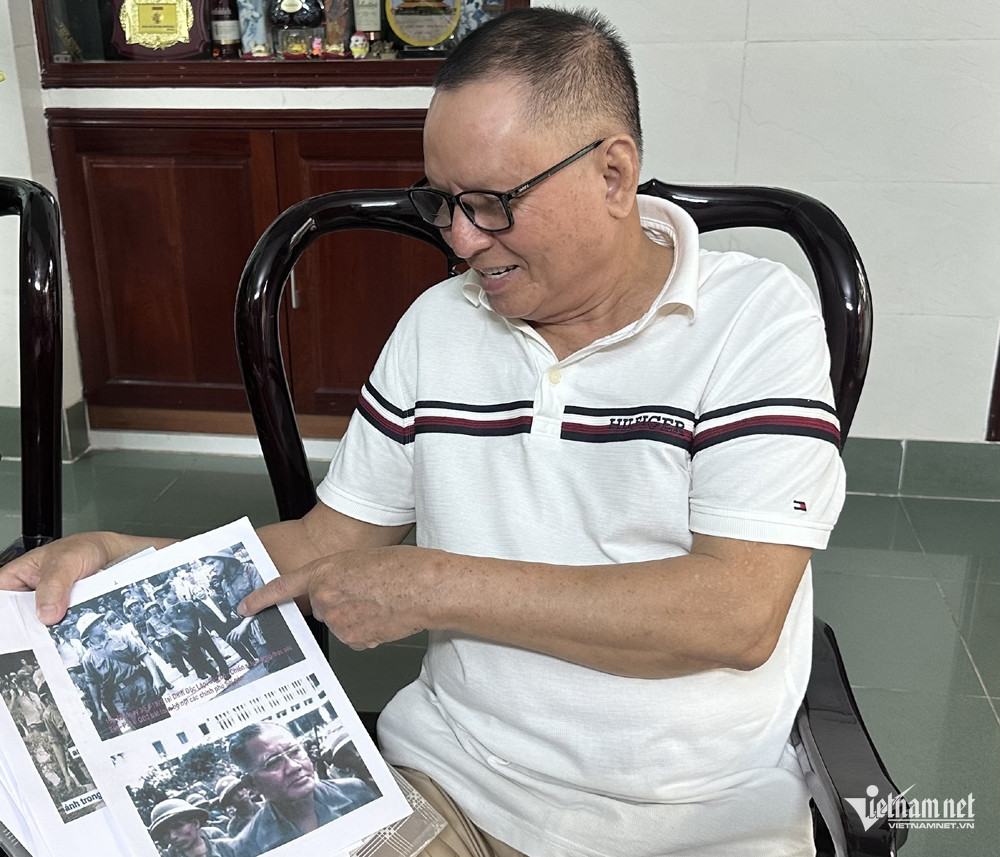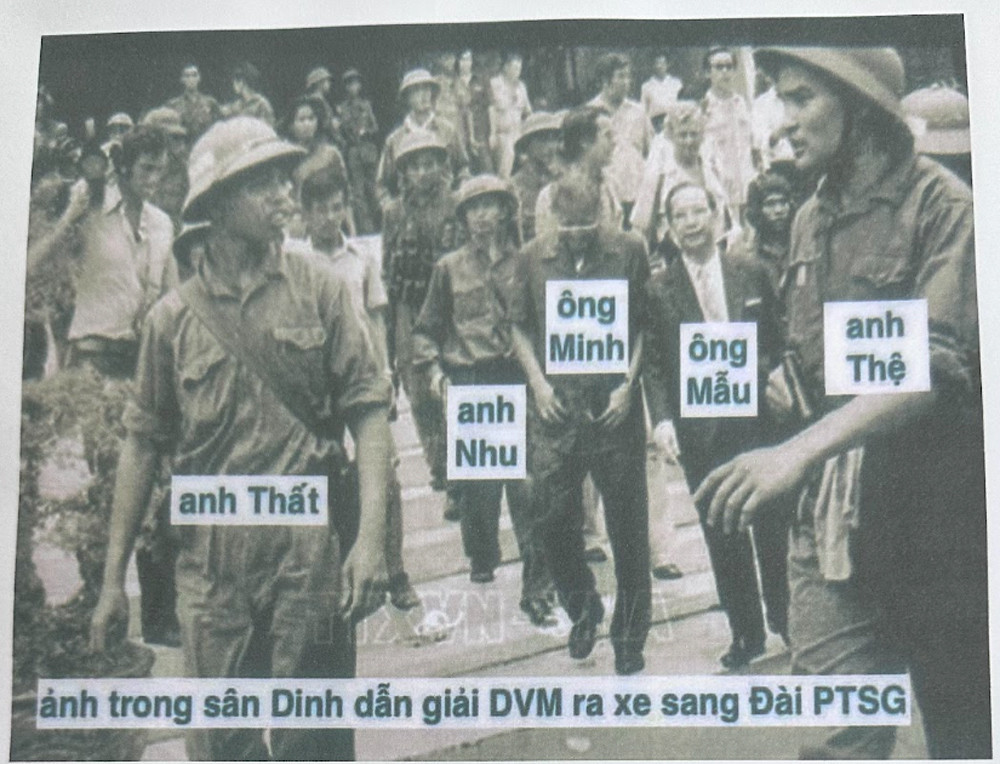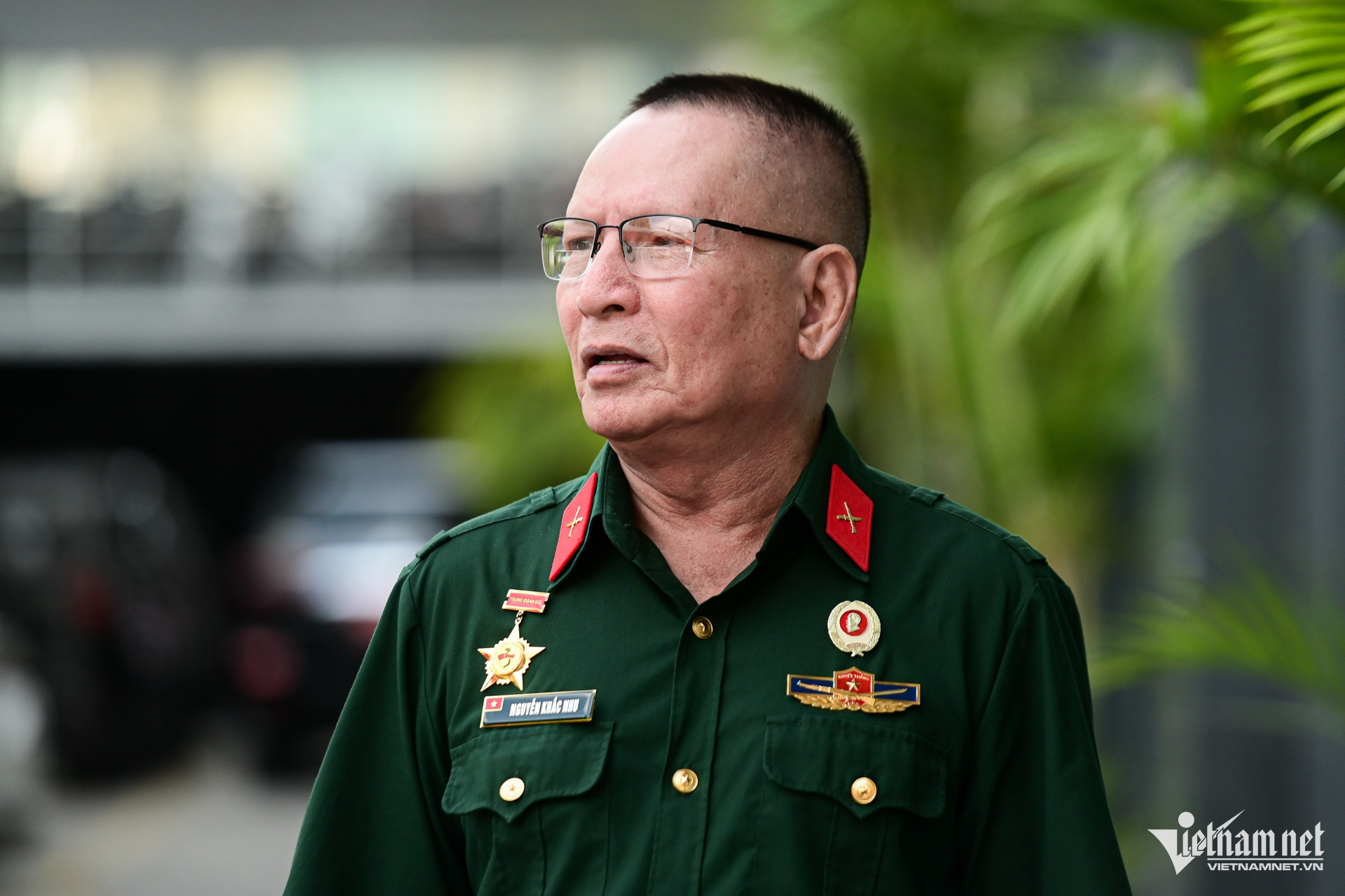Fifty years after Vietnam’s historic victory, the country now enters a new era – "building a glorious, radiant future for the Vietnamese people." To mark this milestone, VietNamNet presents a special series titled “April 30 – A New Era.”
In this series, military experts, historians, and witnesses share memories, lessons, and experiences from the war of resistance against the United States. These accounts highlight the strength of national unity, the will to preserve independence, and the collective spirit that carried Vietnam into a new age of development.
Deep-penetration forces storm the palace

Nguyen Van Nhu (also known as Nguyen Khac Nhu, 77), then a tactical assistant with Infantry Regiment 66 of Division 304, 2nd Army Corps, was one of the few present during the momentous capture and escort of General Duong Van Minh – the final president of the Republic of Vietnam – to the Saigon Radio Station to announce his unconditional surrender.
Pointing to figures in a famous photograph showing the escort, Mr. Nhu identifies himself as the man holding a pistol behind Duong Van Minh. To his left was deputy regiment commander Pham Xuan The (later Lieutenant General and Commander of Military Region 1), and to the right, soldier Bang Nguyen That. All were part of Regiment 66.
“I was there. I saw it with my own eyes. This is the truth,” Mr. Nhu says with conviction.
Following orders from the High Command of the Ho Chi Minh Campaign, the 2nd Army Corps was tasked with organizing a spearhead assault to storm the Independence Palace. The force included Infantry Regiment 66, Tank Brigade 203, engineers, artillery units, and others.
After liberating central provinces such as Ninh Thuan and Binh Thuan, the units advanced toward Dong Nai’s Nuoc Trong base – the enemy’s final line of defense before Saigon. This stronghold housed officer training schools, including infantry, armor, and special forces.

Reproduced image, provided by the character.
Regiment 66 was held in reserve but was ordered to join the assault when Regiment 24 couldn’t capture the base alone. After three intense days of combat from April 26 to the morning of April 29, 1975, the Vietnamese forces took control, opening the gateway for the final push into Saigon.
At dawn on April 30, Regiment 66 reached Saigon Bridge, where they encountered a violent defense from enemy tanks, bunkers, and naval ships. The army destroyed four tanks but lost two of its own and over ten soldiers, including the tank battalion commander who died atop his turret.
“We advanced while fighting,” Mr. Nhu recalls. “I saw special forces crawling to secure the bridge for the main force.” By 9 a.m., the spearhead had crossed Saigon Bridge and continued toward the Independence Palace.
At Thi Nghe Bridge, they faced more resistance but broke through after 10–15 minutes of fighting. In the city zoo area, locals waved liberation flags and helped guide the troops to the palace.
The decisive moment: Escorting Duong Van Minh to the radio station

At 11:30 a.m. on April 30, two tanks from Brigade 203 reached the palace. Tank 843 rammed the side gate but stalled. Tank 390 followed and broke through the main gate, with the rest of the convoy close behind.
Inside the lobby stood a tall man who introduced himself: “I’m Brigadier General Nguyen Huu Hanh, advisor to President Duong Van Minh. The entire cabinet is upstairs, waiting for the revolutionary command.” He then led the way.
To their surprise, the liberation forces found the entire cabinet ready to surrender. “This was unexpected,” Mr. Nhu notes, as their plan had not accounted for an immediate surrender.
When General Hanh introduced the president and prime minister, officer Pham Xuan The declared, “You are prisoners. There will be no handover, only unconditional surrender.”


Photo: P. Thuy
“I told him we needed to take Minh to the radio station immediately,” Nhu adds. Although Duong Van Minh feared assassination on the way, the team quickly formulated a plan. “We said, ‘Put him in the jeep,’” Nhu recounts.
They safely escorted Minh and Prime Minister Vu Van Mau to the station to publicly declare surrender. “Our goal was to end the bloodshed by making the surrender known nationwide,” Mr. Nhu explains. Afterward, they brought the officials back to the palace and handed them over to superior officers.
A soldier’s intuition
“When the mission was complete, I finally felt the joy of national reunification,” Mr. Nhu recalls. “Everything happened so quickly. Yet somehow, we always knew what had to be done. It felt like our fallen comrades were guiding and protecting us.”
Looking back, he feels both pride and a sense of awe. “General Nguyen Huu An later said: ‘This victory belongs to the ones who laid down their lives. We are merely their representatives.’ That was so true.”

Born in Hai Phong and raised in Hanoi’s Hang Vai Street, Nguyen Van Nhu joined the military at 19 and served for nine years, from Khe Sanh to the gates of Saigon in 1975.
“When I speak today, I always thank the Party, the People's Army of Vietnam, those who sacrificed their lives, and the people of Saigon - Gia Dinh. Especially those in the underground resistance who helped us reach the palace safely and fulfill our mission.”
He ends with a message to today’s youth: “I hope the Party and State continue to innovate. Our young generation is talented. May they carry on our legacy to build a better, stronger Vietnam – just as President Ho Chi Minh dreamed.”
Bao Anh
Based on the recollections of Mr. Nguyen Van Nhu (also known as Nguyen Khac Nhu), Tactical Assistant, Infantry Regiment 66, Division 304, 2nd Army Corps.